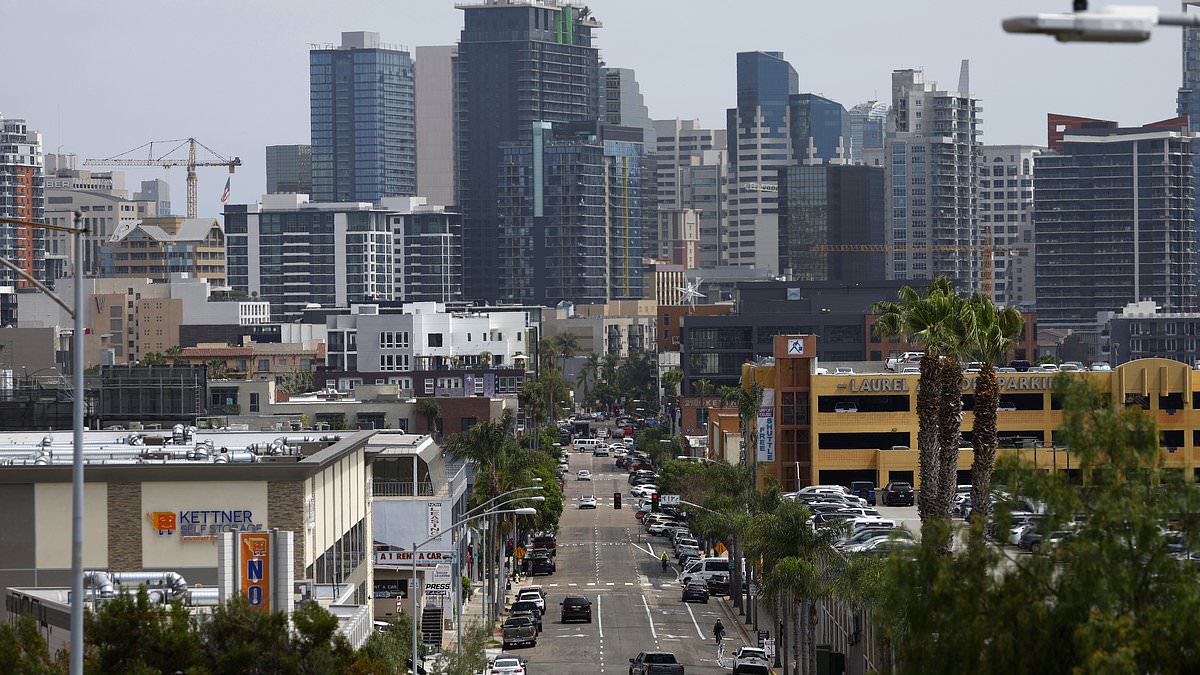California was hit by a 3.3 magnitude earthquake on Wednesday, along a major fault line overdue for a major one.
The US Geological Survey detected the tremor at 9:31am PT outside of Borrego Springs, about 87 miles north of San Diego.
California experiences around 27 to 35 earthquakes per day, but most are very small and go unnoticed.
However, Wednesday’s quake was felt by dozens of people who reported weak to light shaking.
The seismic activity comes as scientists warned the Bay Area will soon suffer a devastating earthquake in the next few decades.
Sarah Minson from the US Geological Survey (USGS) said this month that the chances of the long-feared ‘Big One’ striking San Francisco by 2055 have risen to a staggering 72 percent.
That is because the region sits on top of the San Andreas Fault, an 800-mile-long fault which runs right through the Bay Area, which is overdue for ‘The Big One’ – a magnitude 7.8 earthquake or higher.
While Minson believes there may be some time left for Californians, USGS disagrees and warns that the first major earthquake will come in just seven years.

The US Geological Survey detected the tremor at 9:31am PT outside of Borrego Springs, about 85 miles north of San Diego (pictured)
While Wednesday’s earthquake did not strike directly on San Andreas, it hit along the San Jacinto Fault Zone that is a major component of the former.
The San Jacinto Fault Zone is one of Southern California’s most dynamic seismic areas, producing at least 10 earthquakes with magnitude 6.0 or greater in the past 110 years.
More than 24 people issued shaking reports to the USGS within the first hour of Wednesday’s earthquake.
The USGS detected more than a dozen earthquakes in the region in the last week, but they were all below a magnitude 2.
An assessment from Michigan Tech University showed that people typically do not feel quakes with a magnitude of 2.5 or less.
Those from 2.5 to 5.4 are often felt but only cause minor damage. No injuries or damages have been reported on Wednesday.
San Diego was rocked by a 5.2 magnitude earthquake in April, which was felt across Southern California, including Los Angeles.
An emergency alert was sent out warning residents, ‘Earthquake Detected! Drop, Cover, Hold On. Protect Yourself.’

California experiences around 27 to 35 earthquakes per day, but most are very small and go unnoticed. However, Wednesday’s quake was felt by dozens of people who reported weak to light shaking
Read More
EXCLUSIVE
The 'inevitable' US disasters that keep scientists up at night

The quake’s epicenter was recorded 2.49 miles south of Julian, according to KCAL.
Based on historical trends, it’s estimated the San Andreas causes a major quake every 150 years or so. The last one was 167 years ago.
The last ‘Big One’ in California was a magnitude 7.9 quake that decimated San Francisco in 1906, killing 3,000 people and leveling 80 percent of the city’s buildings.
Minson explained that such a massive earthquake is the rarest of the rare, making the Loma Prieta earthquake look common in comparison.
‘For every magnitude 8, like the 1906 San Francisco earthquake, there are 10 Loma Prieta-sized earthquakes, and 100 Napa-sized earthquakes, and 1,000 magnitude 5 earthquakes,’ the geophysicist told The Mercury News.
Experts predict the next ‘Big One’ would cause roughly 1,800 deaths, 50,000 injuries and $200 billion in damages, according to the Great California Shakeout.
Despite the growing likelihood that at least one major earthquake is just years away, Minson warned that Californians need to focus more on the threat coming from smaller quakes striking the state each year.
‘Even though each of those smaller earthquakes impacts a smaller area and they are less likely to cause damage, they happen so much more frequently that overall the risk from them is higher,’ Minson said.
